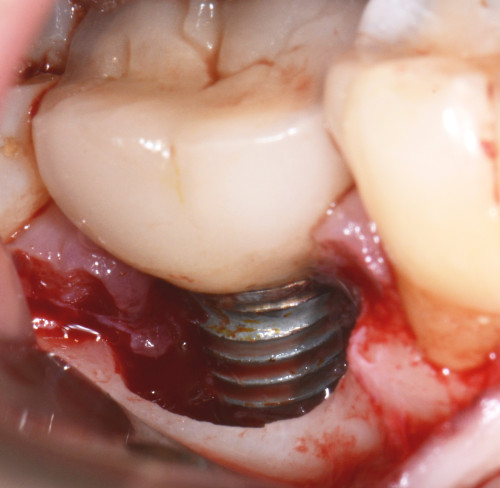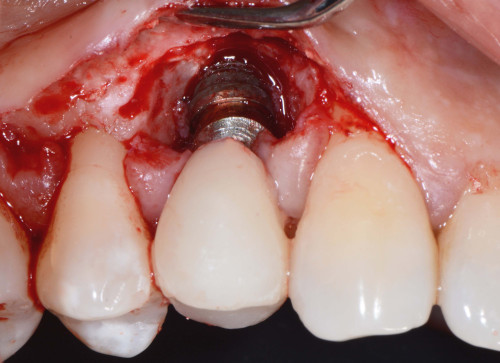Peri Implantitis : how to avoid peri-implantitis
How to avoid peri implantitis ?
Did you know ?

Peri-implantitis is a growing problem in modern implant dentistry with prevalence ranging from 14 to 22%.
Available scientific evidence report a treatment success of peri-implantitis ranging from 30% to 50% after 3 to 10 years.
These poor outcomes call for a preventive approach particularly on periodontally compromissed patients which are more prone to develop peri implant complications.
Key scientific data
- According to several publications, in periodontally compromissed patients, residual pockets over 5 mm at the end of active periodontal therapy represent a significant risk for the development of peri-implantitis and implant loss.
- The absence of keratinized tissues around implant supported restoration may be associated with higher plaque accumulation and bleeding on probing, greater pocket depth and soft- tissue recession, and a higher number of sites that required additional surgical and/or antibiotic treatment
- Implant supported restorations with no accessibility for proper oral hygiene present a risk of 65% to develop peri-implantitis
- Cemented restorations with or without cement excess is associated with more biological complications.
- Lack of supportive periodontal therapy or poor adherence to them resulted in significantly higher frequencies of sites with mucosal bleeding, deepened peri-implant pockets or alveolar bone loss.
Clinical tips

- Efficient periodontal treatment : no residual pocket over 5mm
- Adequate soft tissue management at the time of tooth extraction : no attempt to flap closure
- Special care when placing the surgical incision at the time of implant placement : preserve keratinized tissue on the buccal an lingual aspect
- Absence of keratinized tissue : augment keratinized tissue prior to implant placement or at the time of uncovering
- Implant placement : make sure implant is placed in a correct 3D position to allow adequate prosthetic design
- Implant supported restorations which allow proper oral hygien access : check the possibility of adequate interdental plaque control on the cast model
- Favour screw-retained restorations
- Regular supportive periodontal therapy tailored to each patients risk factors
